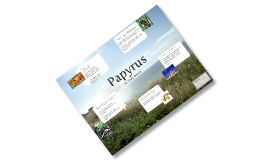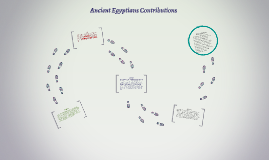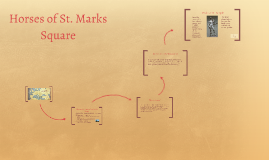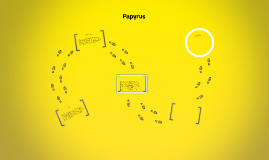Papyrus Presentation
Transcript: Today's Quest: What do all of these items have in common? Digging up the Past with Ms. Bailey "Papyrus" A long time ago, in a place called Egypt... The people of Egypt did not have paper and notebooks like we do today. Because the ancient Egyptians did not have access to YouTube or Google, they needed to create their own means of record keeping. And so, they turned to the papyrus plant that grew by the Nile River. Using its stem and its sugary and sticky qualities, they created papyrus paper that they would use as paper for writing on. Because papyrus was easy to make, it quickly became very popular amongst the Egyptian people. And just like of our paper today, papyrus paper was recyclable and easy for everyday use. Origins of the "Paper Plant" But why was papyrus so important to ancient Egyptians? Papyrus was big business to the people of Egypt, because it was used to make everything. And I mean, EVERYTHING! The ancient Egyptians used papyrus to make paper, baskets, sandals, mats, rope, blankets, chairs, mattresses, medicine, perfume, food, and even clothes. Truly, papyrus was an important "gift of the Nile". They even tried to make boats out of papyrus, but that did not work out very well! The boats quickly became waterlogged and sank. But nevertheless, papyrus continued to be used to make lots of other things. Big Business So how was papyrus made? How is Papyrus Paper Made? Papyrus grew in abundance on the banks of the Nile River. Once picked and cut to the desired size, stems of papyrus were then carefully peeled into thin strips. They were then soaked for several days before the strips were placed horizontally and vertically atop one another. They were then pressed or hammered flat, and left for days (sometimes in the hot sun) before they formed individual sheets of papyrus. But how were the large scrolls made? And why are papyrus so well preserved? Scrolls underwent the same construction process, but instead of doing the process once, the pieces of dried papyrus were glued together to form one long scroll. Due to Egypt's dry weather and dry climate, papyrus are perfectly preserved even when buried deep under rock and sand. In fact, papyrus have only been discovered in Egypt even though this ancient technique was later used by other civilisations such as the Romans and Greeks. Scrolls So what exactly was written on papyrus? What was Paper Used For? Originally, papyrus was mainly used to record religious and government texts of the ancient times, including Greek, Egyptian, and Roman texts. Overtime poems, notes, letters, logs, even shopping lists were written in the ancient language of hieroglyphics. Hieroglyphs were the main written language of Egypt for over 4,000 years. The Ipuwer Papyrus (previously the oldest piece of papyrus found) was first thought to be a poem. It was later translated as a government document about the Kingdom that was in power at the time, telling us lots about how the Pharaoh ruled Egypt. In later years, papyrus was used for drawing and depicting everyday Egyptian life. Ancient Egyptians: V.I.P ONLY! Even though it was uncertain which people could read or write hieroglyphs, today papyrus tell us a lot about the life of ancient Egyptians. The oldest papyrus ever found is over 4,500 years old. It was found in a cave by archaeologists only 9 years ago (2013) and written at the time of King Khufu’s ruling, for whom the Great Pyramid of Giza was built. It is called “The Diary of Merer”, and it logs information in neat hieroglyphs about the lives of the pyramid workers at the time, including the transportation of building materials across the Nile River, farming and the types of food supplies and animals used at the time. It also tells us that Inspector Merer’s job was to transport limestone from the nearby quarry to use as cladding for the pyramid in the construction's final stages, which tells us more about how the Great Pyramid was built. Over 30 pieces of this papyrus were found, but so far only 6 have been translated. This amazing and important part of history is now on display at the Egyptian Museum in Cairo. What does it tell us? Digging deeper Today, only about 1% of all of the papyrus found by archaeologists and papyrologists has been translated. We still have so much to learn about the secret life of the people of ancient Egypt hidden in papyrus. Papyri are extremely important as they are the oldest historical documents that tell us about the past. By continuing to dig deeper we can learn so much more about the ancient life of the Egyptians, and who knows what other mysteries we may yet uncover! But there is still so much more to learn

















